The “Kala Pani” (Black Water) appears like a word connected with paranormal activities in the line of Black Magic. But, in reality, it has some darkest chapters of the British brutalities in the colonial India. Numerous stories revolve around the “Kala Pani” and many of them are associated with the life of a brave soul “Veer Savarkar”, however, there were thousands of freedom fighters, who lived with the darkness and suffering of the “Kala Pani” for many years.
The “Kala Pani” was actually a British Penal Settlement situated in the middle of a vast ocean, miles away from the mainland of India, on an island of Andaman and Nicobar Group. It was perhaps the most torturous punishment faced by the freedom fighters during the Independence Struggle of India, perhaps severe than the death sentences. The stories from “Kala Pani” give you an idea of the painful solitary confinement faced by the freedom fighters, but you may not feel the severity of the ill-treatments, unless you personally visit this place. When I set my foot first time on the island of “Kala Pani”, the famous Cellular Jail was the first intended destination.
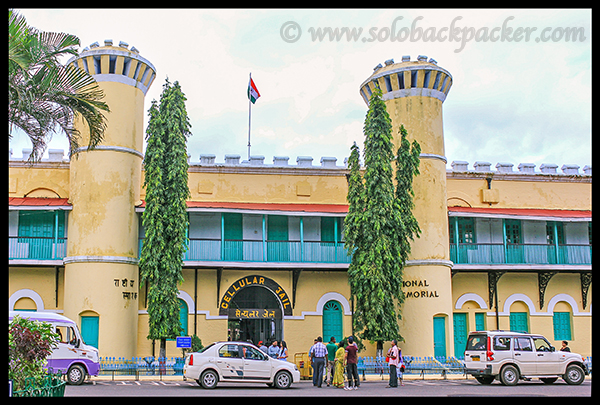
The Story of Kala Pani : Actually, this word “Kala Pani” is a pure injustice to this place. It is just like a dark spot on the natural beauty of Andaman. Replete with green islands, islets, pristine blue waters, mangrove forests, spectacular beaches, rice paddies, water sports and many other natural wonders, Andaman is indeed a charming destination. But, in the general perspective, it mainly has the image of “Kala Pani”.
Despite of its isolation from the mainland in the middle of nowhere, Andaman and Nicobar Islands was an important stop between Malacca and India on a busy trade route, dominated by the European Traders. Merchant vessels were used to stop in Nicobar on the way to Malacca. In 1755, Danish merchants settled a Danish Colony on the Nicobar Islands, but, the islands were repeatedly abandoned due to outbreaks of malaria. In the north of Nicobar, the Andaman was mainly inhabited with the local tribal population. In the course of time, the Andaman Islands developed much more the Nicobar Islands.
The story of “Kala Pani” started much before the construction of the famous Cellular Jail. The British Officials was looking for a bigger penal settlement, because they don’t have the sufficient prisons to confine the Indian prisoners. In 1789, they already attempted for a naval base and penal colony on Chatham Island next to Great Andaman, where now lies the town of Port Blair. Two years later the colony was moved to Port Cornwallis on Great Andaman, but it was abandoned in 1796 due to disease.
But, the First War of Independence in 1857 forced them to re-think about these islands to use as a penal settlement, far away from India. So, even before the erection of any physical prison, the freedom fighters were sent here and used as the bonded labours to work in the construction of the roads, the buildings, the harbour facilities etc on the Ross Island.
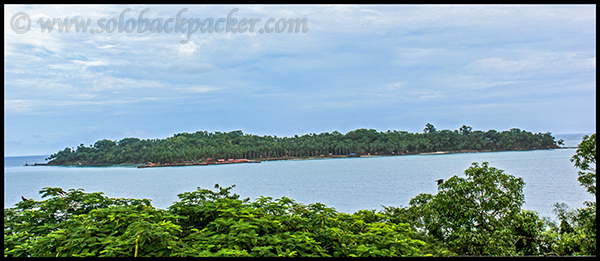
They were living in harsh conditions. The area was surrounded by the dense forest and marsh lands full of snakes, leeches and scorpions. Many people died with the diseases like Malaria and Dentistry. Apart from the infectious diseases, there were terror of local tribes also. They used to kill the strangers by their bows and arrows. The situation was really worse, but it served two main purpose of the British Officers, who were adamant to provide harsh penalties to the prisoners:
1. Sea Voyage was forbidden in the Hindu Religion. A sea voyage (crossing the Black Water) threatened every Hindu with loss of caste, resulting in the social exclusion. So, sending them to a settlement like Andaman was actually a very harsh punishment.
2. The island was surrounded by a big ocean from all the sides. There was no chance of escapes. Even after escaping from the prison, there was no chance to cross the vast spread of ocean, because all the boats were under the control of British. Some even tried to escape, but all went in vain.
Without any doubt, Andaman was a hell to the inmates. By the late 19th century, the freedom movement accelerated in the Mainland India. As a result, the number of prisoners being sent to the Andamans started growing. To stop them interacting with each other, a need for a high-security prison was felt, so that they could be kept in a solitary confinement. The result was the construction of the Cellular Jail from 1896 to 1906.

The Cellular Jail: Cellular Jail was modelled like a bicycle, it had a Watch Tower in the center and from the center, seven straight wings radiated out. The central tower was used by the guards to keep watch on the inmates. A large bell was also there to raise an alarm, in case of any eventuality. Each of the seven wings had three stories. Every individual cell was very small in size, having a door on the front and a small ventilator window at a height of 3 meters on the back side. The cells were so placed that the front side of one cell faced the back side of another cell. That way, there was no chance to see each other or to talk with each other. The Cellular Jail got its name from the small cells only. The confinement was so much isolated that The Savarkar brothers did not know that they were in the same jail for two years.
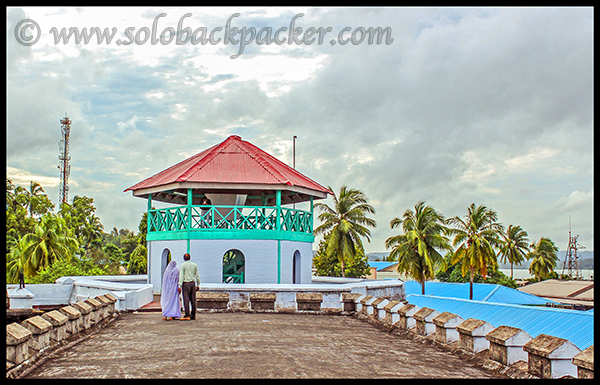
The prisoners were subjected to the inhuman and cruel behaviour by the British. There were no toilet and no lights. They used to get two earthen pots. One was used for consuming food items and second as a toilet. Every morning they were supposed to wash their pots.
There were other struggles to survive in that inhuman conditions. The cells used to leak during the rain, they were mostly damp. There was no lights, so getting stung by the scorpions was a common affair. Since no proper treatment was available, many people died due to the fever caused by the scorpion stings.
The prisoners were treated like the slaves and subjected to the brutal punishments. The food that was given to them was not fit for human consumption. There were worms between the pieces of the bread and wild grass was also boiled and served in place of the vegetables. Along-with the labour work related to the road and building constructions, they were also used in the rope making and oil extraction processes. Everyone has to extract a huge amount of oil within a fixed time limit. Crossbar fitters and heavy iron chains were all around their body, legs and the neck. The doctors used to give fitness certificate reluctantly, even they were medically unfit and sick. There was no concession to the sick inmates.
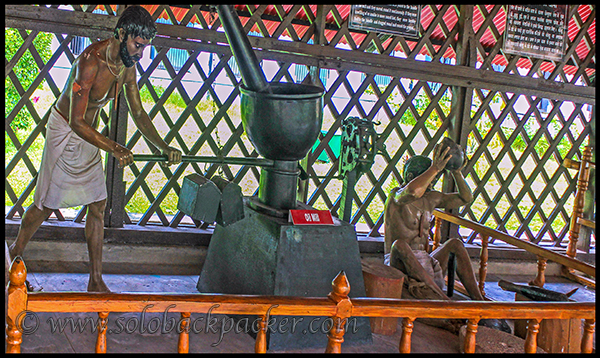
Once, many inmates tried to escape, but it was almost impossible to cross the ocean. They all were recaptured by the British. One of them committed suicide and rest were hanged till death. There was no provision for last rituals, so their dead bodies were thrown in the sea after hanging with the stones.
In 20th century, lot of political prisoners were also brought to the Cellular Jail, but there was no improvement in the living conditions. Few of them went on the hunger strike. To break their strike, the doctors forcefully inserted a pipe inside their nostrils, so that milk could be fed in their stomach. The force-fed milk unfortunately entered in the lungs of a freedom fighter named “Mahavir Singh” and he lost his life. All in all, the penalty of Black Water was hard enough to chill the brave bones also.
When British Became The Prisons of Their Own Prison: British people also became the prisoners at their self-made prison, when Japan invaded and captured the island from 1942 to 1945. Subhash Chandra Bose also visited this prison during the Japanese invasion and theoretically assumed the control of the whole island, but actual power was centred in the hands of the Japanese. Japanese also ill-treated the Indian Prisoners, in fact, 44 Indian Civilians were shot by them on suspicion of spying. Later on, after World War II, the British regained the control of the island.
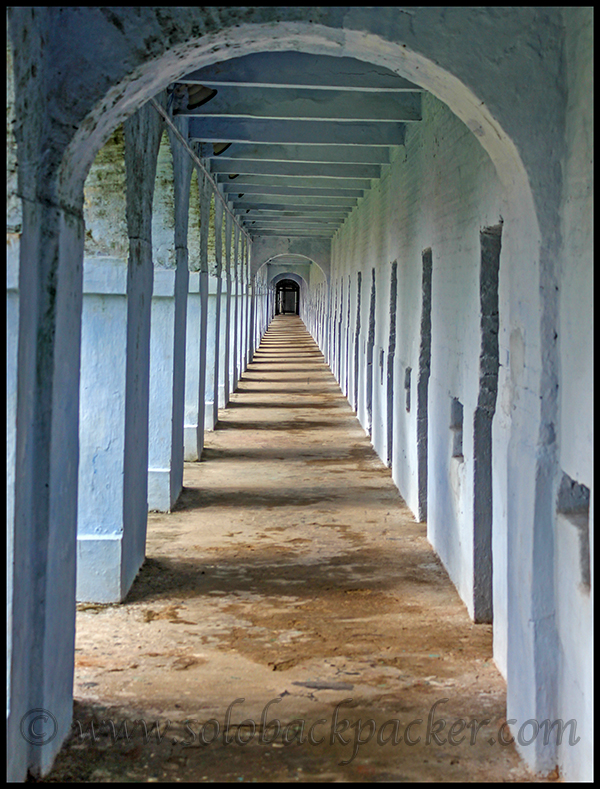
Cellular Jail After The Independence: Two out of seven wings were destroyed by an earthquake and subsequently, two other wings were destroyed during the World War II. Thus, only three wings are intact there. Out of these three wings, back side of one wing and front side of two wings are accessible to the general public. While moving out of India after the independence, The British wanted to create a separate country on Andaman Islands populated with Anglo-Indians and Anglo-Burmese, but the plan couldn’t take shape and Andaman & Nicobar Islands became an integral part of India. The Indian Government declared this prison as a National Monument and it became an important tourist attraction in the region.
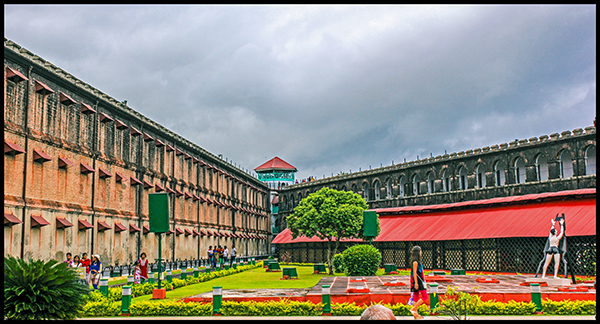
The major portion of this jail has been converted to a hospital, where medical treatments are free. In the main complex, the routine life of the inmates and their hard labour is displayed through the clay models.
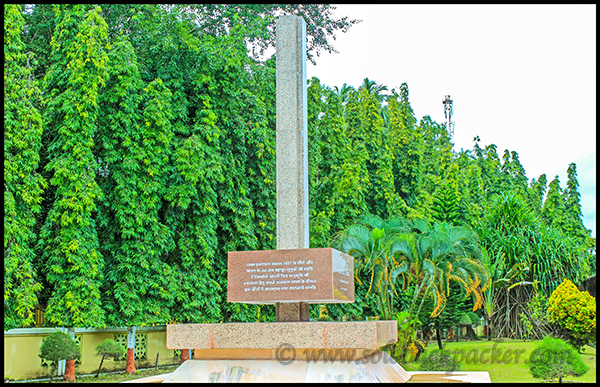
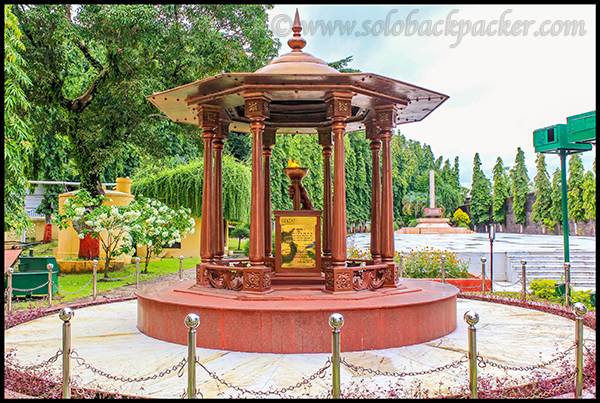
The cells of the prison are locked and have a similar design. On the second floor, there is a special mention of Veer Savarkar’s Cell. Now, the wall of this cell is completely white-washed, but during his confinement, it is believed that, in the absence of any reading and writing materials, Savarkar ji wrote many poems on the wall using the thorns and pebbles.
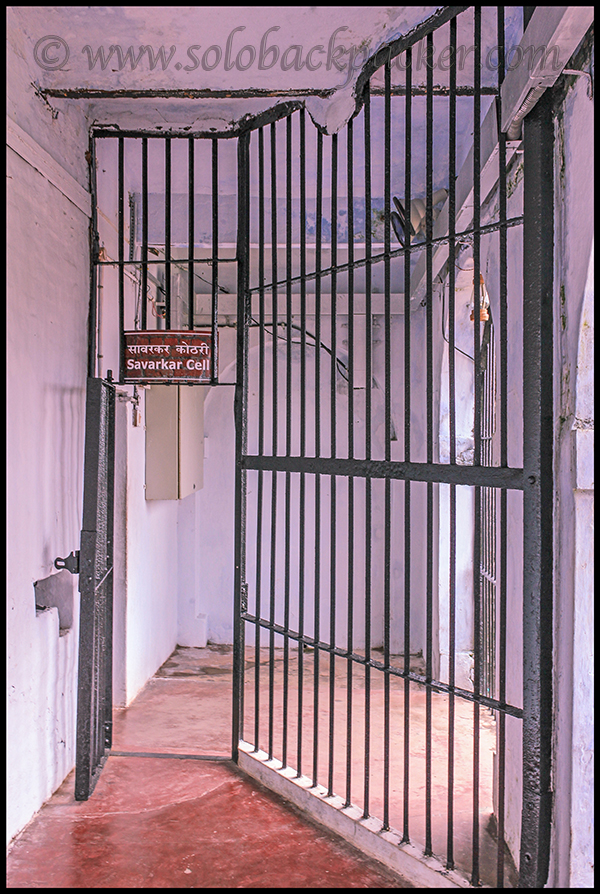
The roof of the cells and the watch tower in the center is also accessible through a flight of stairs. From the roof, one can see the beautiful surrounding. The coconut tree on the sea bank and lot of greeneries is a beautiful sight.
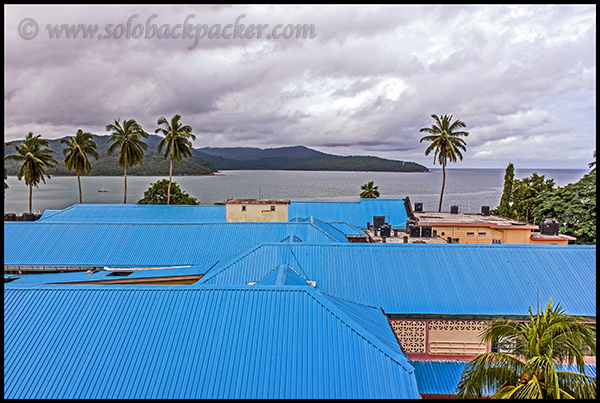
How to Reach The Cellular Jail? The jail is situated approx at the distance of 1.5 kms from the main market (Gandhi Market, Bus Stand) in Port Blair. The hired autorickshaws, taxis are available. It is also accessible by a simple walk via Ghantaghar (Clock Tower). Jail is situated on few meters heights from the sea level. After visiting the jail, it is possible to descend down directly to the Rajeev Gandhi Marine Park.
In this way, to visit this area, it is advisable to visit the jail first. It usually takes two hours to roam around the jail. After that, it is possible to visit Marine Park. After visiting Marine Park, go back to the jail to enjoy the Light and Sound show in the evening.
Entry Fee and Timings: The jail remains open from 0900 AM to 0500 PM throughout the year except the National Holidays. A daily lunch break is there from 1230 PM to 0130 PM. The price of entry tickets to the Cellular Jail is Rs 30 per person.
The Sound and Light Show: In the evening, there is a Sound and Light Show in the jail complex. Many years old Peepal tree used to tale the stories of freedom fighter’s struggle during their confinement in a symbolic manner. It is not an extraordinary show, but recommended to spend a nice evening in Port Blair.
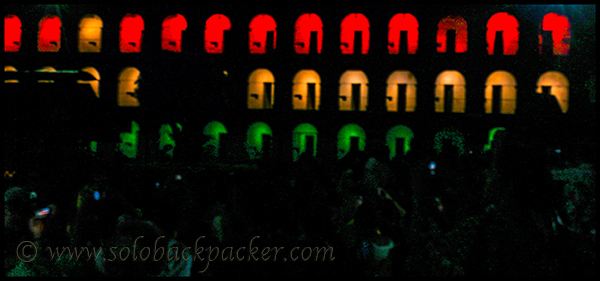
There are two daily shows. First show timings are from 0600 PM to 0655 PM and it is always in Hindi language. Second show timings are from 0715 PM to 0810 PM and it held in English (Monday, Wednesday and Friday) or Hindi ( Rest of the days) on every alternate days. For the first show, ticket bookings started at 0415 PM and entry started from 0530 PM. For the second show, ticket booking started at 0615 PM and entry started at 0705 PM. The second show can be booked in a day advance. The ticket price is Rs 50 per person. During the peak season, the tickets have to be booked in the advance, else it is not possible to buy a ticket on the window due to the high rush.
The jail complex closes down completely after the Sound and Light Show. In front of the Cellular Jail, the glittering lights of Marine Park presents a beautiful scene. Near the sports complex, few meters from the marine park, many food stalls provide a nice ambience to enjoy the local food in the evening.
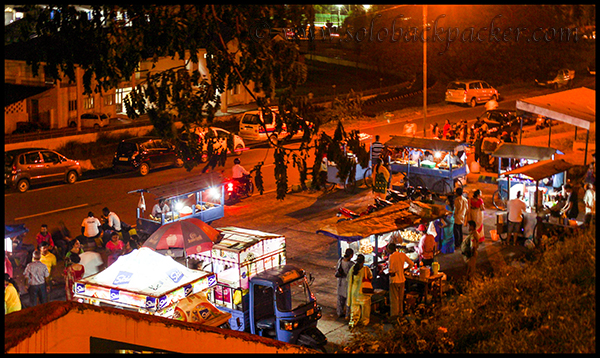
At the last, if you are on a trip to Port Blair, a visit to the Cellular Jail is like a pilgrimage. Thousands of miles away from the mainland India, this prison is a standing ovation to the struggles and sacrifices made by our freedom fighters.


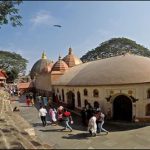
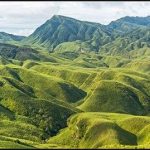
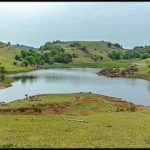
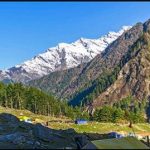
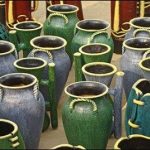
It is one of the place, which we can remember the freedom fighters of india, and unbelievable impression by the British people.
I heads off to freedom fighters.
Thank you,
Oh my god, this is a chilling story 🙁 in such a wonderful place. One of the most comprehensive accounts I’ve read on the Cellular Jain & kala paani. Thanks 🙂
Glad that you like it. Thank You. 🙂